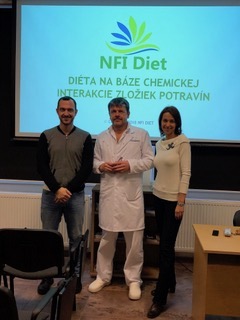Nutritional facts
E-numbers explained
Below you find a list of which groups of E numbers can be found in food. Even though they are all certified safe for consumption we believe some are better to avoid than others.
E100–E199 (colours)
E200–E299 (preservatives)
E300–E399 (antioxidants, acidity regulators)
E400–E499 (thickeners, stabilisers, emulsifiers)
E500–E599 (acidity regulators, anti-caking agents)
E600–E699 (flavour enhancer)
E700–E799 (antibiotics)
Food colouring or colouring additives (E100-E199), is any substance, pigment or dye that when added to food or drink imparts colour. They come in many forms from powders, liquids, pastes and gels. Food colouring is widely used in home cooking and commercial food production. They are also widely found in other forms from cosmetics to pharmaceutical products.
Various types of sugars
The word "Sugar" is a generalised term that is used for a soluble sweet tasting carbohydrate. The varying types of sugars are derived from various different sources. Sugars groups are broken down into monosaccharides which also includes glucose. Glucose is also commonly known as dextrose, fructose and sucrose.
Glucose
This is the most important monosaccharide and is the body’s preferred energy source. The word glucose is also referred to as blood sugar, glucose freely circulates in the blood of our bodies and works with the enzymes glucokinase or hexokinase to initiate metabolism with in the body.
Most of the carbohydrates you eat the body processes into glucose, which can then either be used immediately "burned" for energy or are stored in muscle cells or in the liver. Unlike the sugar fructose, insulin is mainly secreted by the pancreas in response to elevated Levels of glucose within the blood. The primary role of insulin is to facilitate the entry of glucose into the cells.
Fructose
Fructose is a sugar found naturally in many fruits and vegetables, and added to various beverages such as soda drinks and fruit-flavored drinks. However, it is very different from other sugars because it has a different metabolic pathway and is not the preferred energy source for muscles or the brain. Fructose is only metabolized in the liver and relies on fructokinase to initiate metabolism. It is also more lipogenic, or fat-producing, than glucose. Unlike glucose, too, it does not cause insulin to be released or stimulate production of leptin, a key hormone for regulating energy intake and energy usage.
Sucrose
Sucrose is more commonly known as "table sugar" or "granulated sugar" and is found in sugar cane. Many of the vegetables and fruits we eat also contain naturally occurring sucrose. When sucrose is consumed, the enzyme beta-fructosidase breaks the sucrose into both glucose and fructose with in the body.
When sucrose breaks down into two units the body responds to the glucose level in a meal in the normal manner. However the fructose uptake occurs at the same time within the body. The body will use glucose as its main energy source and the excess energy from fructose, if not needed, will be moved into immediate fat synthesis within the body which is stimulated by the insulin released from the pancreas in response to glucose elevated levels within the blood.
Maltose
Maltose is a disaccharide and is made up of two units of glucose.
When starch is broken down using the enzyme beta-analyse, two units of glucose are removed each time producing maltose.Maltose is a reducing sugar unlike sucrose, in fact all monosaccharides and most disaccharides are reducing sugars.

